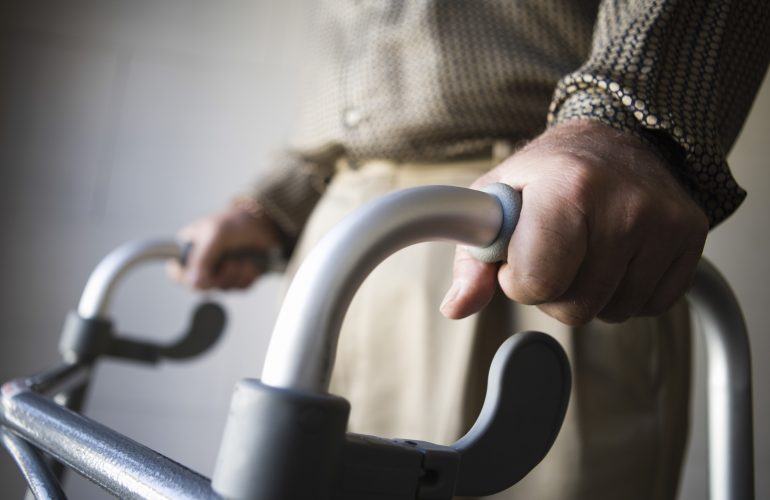As my mother aged, she fell. Once, twice… 16 times. Her name was Mary, she was a wonderful woman and a nursing assistant for 30 years. She lived with my wife, Anabel and I for several years. We used to call her the “Luckiest Faller” because she rarely got hurt after a fall. She usually landed on her backside. After developing a form of dementia (we never knew which one) she fell more and eventually ended up with a head wound and a trip to the emergency room. Not too long afterwards, I found a wonderful assisted living for her.
Facts about Falls
One thing we know for sure, the risk of falling increases with age, and the risk is worse for women than men, as in my mother’s case. Around two-thirds of those who fall will fall again within 6 months. So, one fall is unfortunately, a decent predictor of another fall. Falls are the leading causes of death from injury among people 65 years of age and older. Hospital stays are twice as long if there is a fall-related injury involved. One out of three seniors living at home will fall annually and one of every two living in nursing facilities will fall each year. Around 60% of deaths caused by falls are among people 75 and older. And one last fact, around 9,500 seniors die annually due to fall-related injuries.
Looking for Easy, Online CEUs?
Find Healthcare Compliance CEUs and many other subjects to fulfill your CE requirements.
Try a FREE CEU!
Why do Seniors Fall?
Risk factors for fall include changes that are a part of normal aging as well as certain acute or chronic conditions. While there are many reasons for falls among seniors, most studies report that there are some common reasons including:
- Side effects of medications
- Accidents and the environment
- Gait or balance disorder
- Dizziness and vertigo
- Drop attack
- Confusion
- Visual or hearing problems
- Postural hypotension
- Incontinence
- Stroke
- Depression
- Parkinson’s disease
- Seizure disorder
- Previous falls
Other risk factors are related to the senior’s immediate living environment and are most likely to be seen in areas such as the bathroom, bedroom, dining room and hallways. Seniors may fall when they are reaching for something. Perhaps poor lighting is behind the fall. One reason for falls that may go unnoticed is inappropriate footwear. Some studies have reported that going barefoot is the best way to prevent falls, but this is not widely accepted in senior living due to regulations. Are tennis shoes better for seniors? Many people don’t think so. How many seniors grew up wearing sportswear? It way be completely foreign to them now and may actually be the very reason for falls. Other environmental causes for falls include lack of secure handrails, wet or uneven floors, loose rugs, clutter, unstable or lightweight furniture, and insecure toilet seats or bathroom handrails.
Consequences of Falls
This is where the news gets worse. Falls can lead to many serious outcomes including death. Serious injuries such as hip fractures can result from a fall. Between 20% – 30% of seniors may develop a fear of falling and decrease their activity as a result. They may lose independence and self-confidence. Their quality of life may suffer as they require more care.
Final Thoughts
Although this article did not address fall prevention (that is a totally different topic), I simply wanted to write a little about falls and remind the reader of the seriousness of falls among older people, either living at home or in a facility. My mother taught me a lot about falls, and for that I am grateful. She made the issue very real and up close. As a gerontologist, I could read, write and present on just about anything. But, when you experience something first hand, it leaves quite a different impression.
More About Healthcare Compliance
- Infection Control 101
- HIPAA and Social Media: The Good, Bad and Ugly
- Elopement in Senior Care
- OSHA: 11 Areas to Know in Senior Care
- Corporate Compliance 101
Looking for Easy, Online CEUs?
Find Healthcare Compliance CEUs and many other subjects to fulfill your CE requirements.
Click here for Healthcare Compliance CEUs

